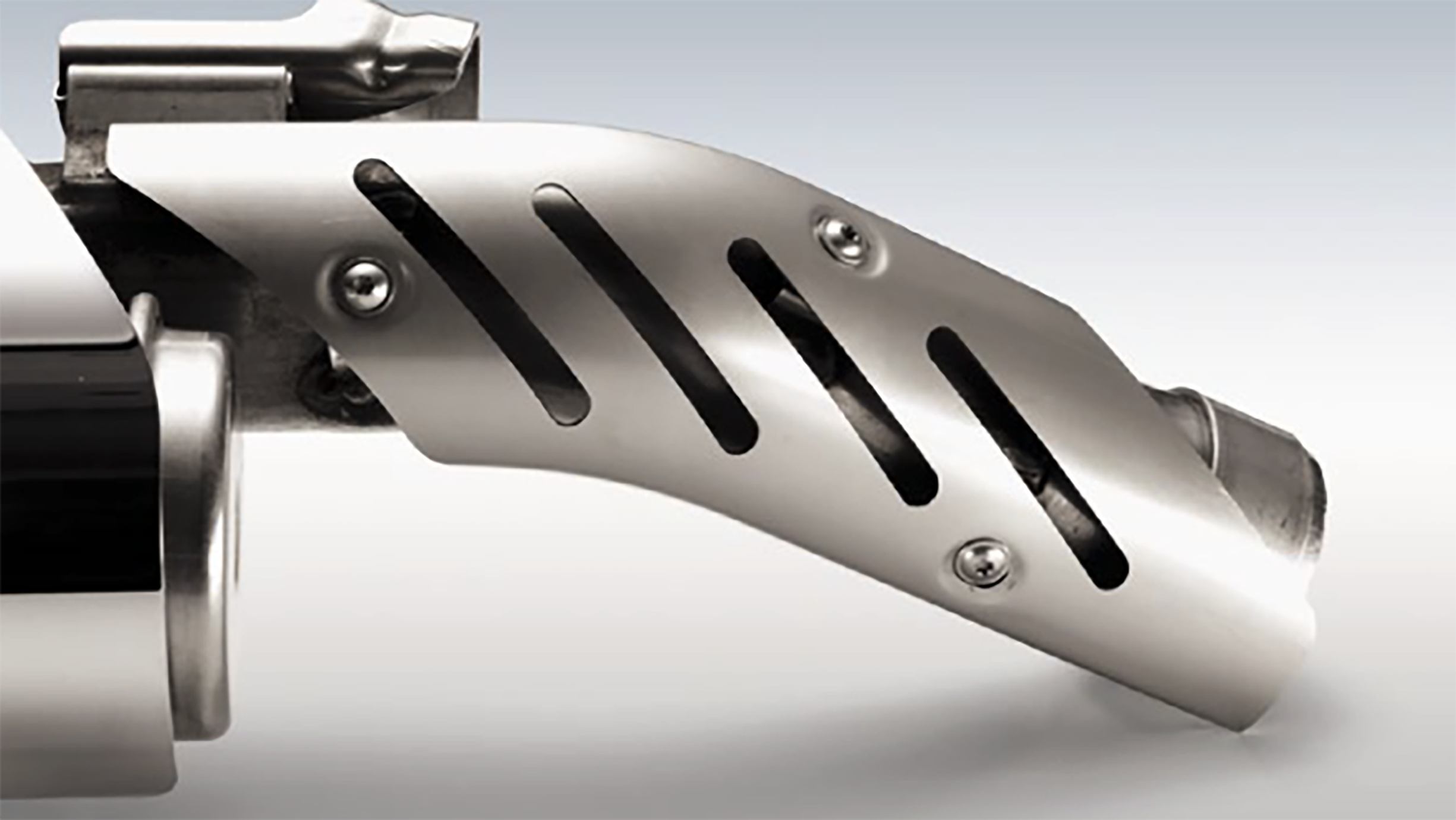Solutions for motorcycles.
Perfectly connected: Heat shields for a motorcycle exhaust system.
While developing a new motorcycle, a well-known manufacturer of exhaust systems contacted us regarding an efficient fastening technology of heat shields to exhaust systems. In the course of our cooperation, we were not only able to offer a high-performance and secure fastening solution, but also significantly simplify the originally planned assembly process, thereby saving costs.
In order to ensure the greatest possible safety for motorcycle riders, every single component of the motorcycle must meet the highest quality standards. At the same time, all elements must be perfectly assembled and stably installed. The exhaust system is a particularly sensitive component of motorcycles, the secure fastening of which poses great challenges for manufacturers.
Safe and resistant at all times – even under constantly high loads.
Exhaust systems and the heat shields installed on them are subjected to considerable loads during operation. The motorcycle exhaust must remain functional in the event of large temperature differences between -20 °C and +220 °C. In addition, the fixation of the exhaust must be secure and stable in order to effectively compensate for vibrations while driving and to function reliably even in a wide variety of weather conditions. And this is even more so in the case of a motorcycle than in a passenger car, since the driver can come into direct contact with the ex-haust system.
The risk of the heat shield or exhaust loosening from the body of the motorcycle due to the var-ious stresses and thus endangering the safety of the rider must therefore be avoided at all costs. Accordingly, the vibration-resistant fastening of the heat shield to the exhaust system and its unrestricted functionality in this context had the highest priority for us.
Through intensive cooperation to the optimal result.
Right at the beginning of our cooperation, the customer presented us a concept for fastening the heat shield to the exhaust system: Several holders, each with a welded nut, were to be welded to the exhaust system and the heat shield was to be fixed there with a screw. Additional stability should be provided by a two-component adhesive, which is located in small capsules on the thread of the screw and sticks when fastened. Based on our expertise, we quickly discovered potential for improvement after reviewing the concept, which we discussed with the customer:
- The adhesive of the screw should be heat-resistant at temperatures above 200 °C and should not lose stability.
- The installation of the heat shield should be associated with less complicated welding work.
- The whole process should be aimed at the use of a few components.
Our manufacturer-independence enables us to combine the different manufacturing processes like Lego bricks for the respective application.
